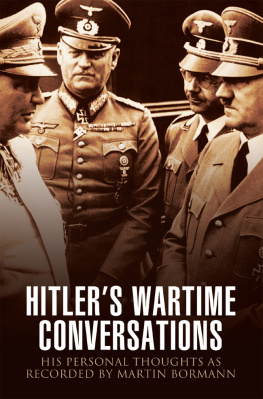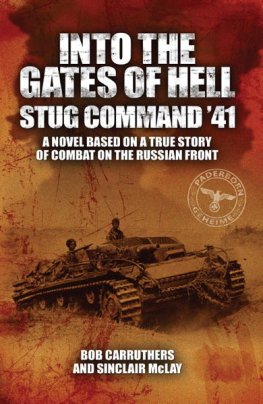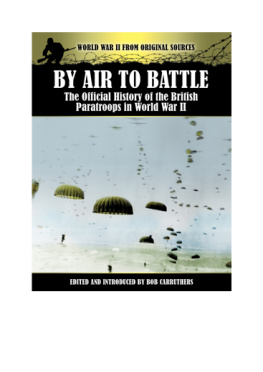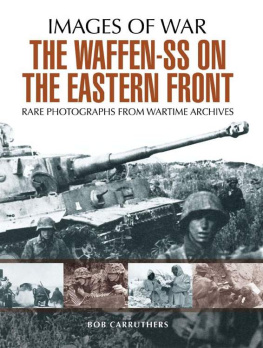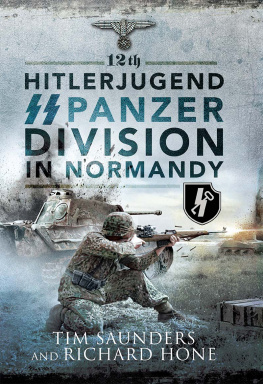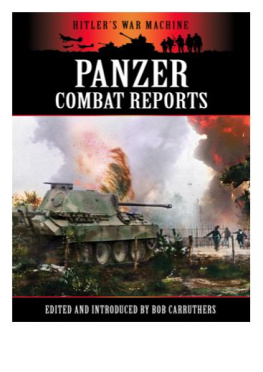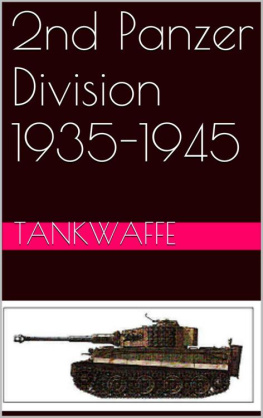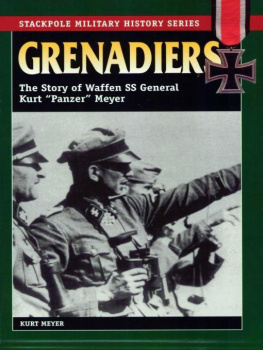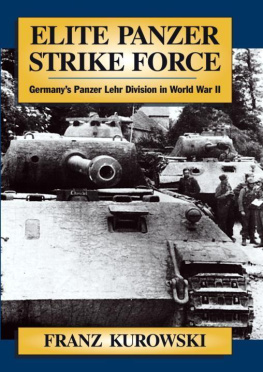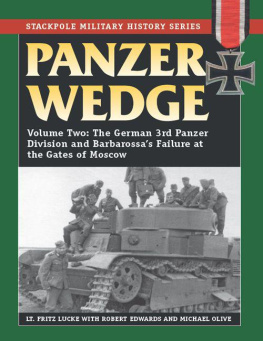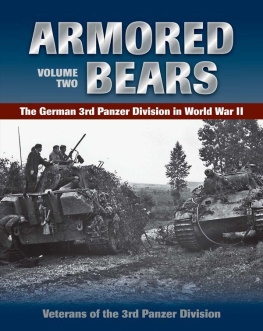PANZER ROLLEN
THE LOGISTICS OF A PANZER DIVISION FROM PRIMARY SOURCES
PANZER ROLLEN
THE LOGISTICS OF A PANZER DIVISION FROM PRIMARY SOURCES
EDITED AND INTRODUCED BY
BOB CARRUTHERS
First published in Great Britain in 2018 by
Pen & Sword Military
An imprint of
Pen & Sword Books Ltd
Yorkshire - Philadelphia
Copyright Coda Publishing Ltd. 2018
Published under licence by Pen & Sword Books Ltd.
ISBN: 9781473868809
eISBN: 9781473868823
Mobi ISBN: 9781473868816
A CIP catalogue record for this book is available from the British Library.
All rights reserved. No part of this book may be reproduced or transmitted in any form or by any means, electronic or mechanical including photocopying, recording or by any information storage and retrieval system, without permission from the Publisher in writing.
Pen & Sword Books Limited incorporates the imprints of Atlas, Archaeology, Aviation, Discovery, Family History, Fiction, History, Maritime, Military, Military Classics, Politics, Select, Transport, True Crime, Air World, Frontline Publishing, Leo Cooper, Remember When, Seaforth Publishing, The Praetorian Press, Wharncliffe Local History, Wharncliffe Transport, Wharncliffe True Crime and White Owl.
For a complete list of Pen & Sword titles please contact
PEN & SWORD BOOKS LIMITED
47 Church Street, Barnsley, South Yorkshire, S70 2AS, England
E-mail:
Website: www.pen-and-sword.co.uk
Or
PEN AND SWORD BOOKS
1950 Lawrence Rd, Havertown, PA 19083, USA
E-mail:
Website: www.penandswordbooks.com
Introduction
The Intelligence Service is all too often disparaged by the men doing the hard and dangerous work in the front lines. When viewed from the perspective of those lost in the fog of war, the old clich that the concept of Military Intelligence is a contradiction in terms is perfectly understandable. However, the work of the Military Intelligence Service was invaluable in shaping both the strategy and tactics of the Allied forces that won the Second World War.
For historians today the Military Intelligence Service, Information Bulletins published by the US Military Intelligence Division based in the War Department in Washington D.C., provide an intriguing primary source reference with regard to the information that was provided to the men fighting on the Allied side in the field. The two volumes gathered together in this publication were also published by the German War Office. They are particularly valuable as they also provide a rare glimpse into the methodology underlying the operation of an armoured division from the German perspective.
Part 1 of this volume is the Military Intelligence Service, Information Bulletin No. 18, published on June 15, 1942. This interesting document is a translation of a captured German training manual entitled The German Armoured Division, which was first published by the German War Office in December 1940. At the time of the German publication the number of German armoured divisions was increasing and their organisation was being altered and expanded. However, comments by German commanders in Libya as late as October 1941 indicate that the principles expressed in the 1940 German manual proved satisfactory with little or no modification. The Information Bulletin was therefore still relevant when translated and published in Washington during 1942.
Part 2 of this volume, The German Motorised Infantry Regiment is a translation of another captured German field manual that was also published by the German War Office. This publication was entitled Provisional Instructions for the Employment and Tactics of the Motorized Infantry Regiment and Battalion.
This volume dates from 1 March 1941, and is concerned with the tactics of the motorised infantry regiment and battalion when incorporated into a German armoured division.
The aim of the German command under the guidance of forward looking officers like Guderian, was to bond together the various elements of an armoured division in order to form one homogeneous unit. The principal purpose of the motorised infantry regiment was to take the field in close co-operation with tanks. The purpose of the manual was to shape the tactics of this new type of division to support an armoured spearhead.
At the time the German manual was published the motorised infantry regiment was still a comparatively new concept. In particular the support elements of the new regiments were yet to undergo the transition from fully motorised artillery units to armoured artillery units. Armoured artillery, in the form of the Wespe and the Hummel , did not see service until 1942 and 1943 respectively.
It is indicative of the forward-thinking nature of the German command system and its ability to cope with changing battlefield conditions that these new forms of weapon systems were adopted by the German armoured divisions and their supporting units as quickly as they could be designed and manufactured.
As this second document was designed to supplement The German Armoured Division it is fitting that both documents are presented together in this single volume.
Part 1
The German Armoured Division
Military Intelligence Service, Information Bulletin No. 18, 15 June, 1942
The following text is taken from a Word War II U.S. War Department Information Bulletin. As with all wartime intelligence information, data may be incomplete or inaccurate.
Contents
Chapter 1
Characteristics and Organization
1. The armoured division is intended for strategic roles. It combines great fire power with high mobility, and its armour and speed restrict the effectiveness of enemy weapons.
2. Its strength lies in attack. It is especially suited for surprise appearances on the battlefield, rapid concentration of considerable fighting power, obtaining quick decisions by breakthroughs, deep penetrations on wide fronts, and the destruction of the enemy. The attack of the armoured division has a serious effect on the enemys morale.


